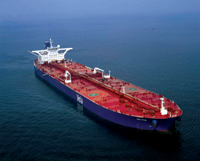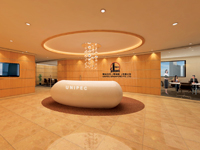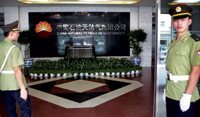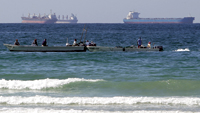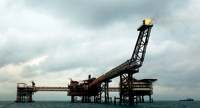
 Iran has attached priority to boosting its gas production capacity
Iran has attached priority to boosting its gas production capacity
IRAN, the Organization of the Petroleum Exporting Countries’ (Opec) second biggest oil exporter after Saudi Arabia, will invest around $30 billion in its oil and gas sector in 2012.
Much of this investment will go into oil and gas exploration especially in the South Pars gas field, according to official information. Iran is the third largest producer of Opec. The country is finding it tough to explore and develop new oil and gas fields as foreign companies are shying away from the country because of sanctions against it by the US and Europe.
Oil is the major source of revenue for the Iranian economy. Since the sanctions by US in December last year, the economy of Iran has come under severe pressure. Spending more in oil and gas exploration will not help the country much if the sanctions are not lifted soon.
However, despite the sanctions, Iranian Oil Minister Rostam Qasemi says that it is projected that the country’s oil output will increase by 1.5 million barrels per day (mbpd) by 2016. Speaking at the inauguration ceremony of the world’s largest polyvinyl chloride (PVC) production unit at the Arvand Petrochemical Complex, which is located in Mahshahr in the southwestern province of Khuzestan, Qasemi states that Iran’s daily gas output is projected to rise by 1.47 billion cubic metres.
All development plans related to joint oil and gas fields will be finalised by the end of the first half of the current Iranian calendar year (September 21), he adds. The country’s oil production has steadily increased in 2012, rising to 3.758 mbpd in April.
Iran’s oil production stood at 3.742 mbpd in the first quarter of 2012, which was an increase of 133,000 bpd in comparison to the output in the fourth quarter of 2011. Iran has attached priority to boosting gas production capacity at its joint oilfields with Qatar and Saudi Arabia.
Qasemi has ordered all contractors of South Pars gas field development projects to work round the clock in three shifts to complete the development of all phases, especially phases 12, 15, 16, 17, and 18. The South Pars gas field is shared by Iran and Qatar. The Iranian share, which is divided into 29 phases, has about 14 trillion cubic metres (tcm) of gas, or about eight per cent of total world reserves, and more than 18 billion barrels of liquefied natural gas. Iran ranks fourth worldwide with 155 billion barrels of recoverable oil reserves, after Venezuela, Saudi Arabia, and Canada.
With 34 tcm of natural gas reserves, Iran has the world’s second-largest natural gas reserves after Russia.
Meanwhile, phases 9 and 10 of the South Pars gas field have reached target production of 50,000 mcfd, three years behind schedule.
“Before the Iranian month of Day (starting December 22), 35,000 mcfd of gas were being produced on a daily basis from wells in South Pars phases 9 and 10,” the project’s manager, Esmail Galehdari, says.
“At the moment, after drilling 23 wells, this figure has increased to 50,000 mcfd,” he adds.
Two Iranian contractors and South Korea’s GS were the main contractors on the $4.15 billion project, Galehdari says.
The two phases, which were officially inaugurated in 2009, will also produce 80,000 bpd of condensates and 400 tonnes per day of sulphur as well as 1 million tonnes per year (mtpy) of ethane and 1.05 mtpy of LPG.
The head of parliament’s energy commission, Hamid Reza Katouzian, said recently it would take three months for the two phases to reach full production.
 |
South Pars work ... going full steam |
Because of its size, South Pars is being developed in 28 main phases, of which only eight were fully operational until the startup of phases 9 and 10.
However, most of the phases still to be fully developed are running behind schedule after Western oil companies pulled out in recent years.
The work has been taken over by local contractors and by a few Chinese companies still willing to invest in Iran’s upstream oil and gas projects despite the stringent sanctions that have been imposed against Tehran since the start of the year over its controversial nuclear programme.
Sanctions have made it difficult for Iran to access the international financial system and the domestic contractors are overstretched and lack the modern technology required to tackle the large number of projects that they have been awarded.
Iran recently raised its reserve estimates for both oil and gas to 154.58 billion barrels and 33.69 tcm respectively.
BP’s Statistical Review for 2011 puts Iran’s proven oil reserves at end-2010 at 137 billion barrels of oil and 29.6 tcm of gas.
Gas accounts for more than 50 per cent of total energy consumption in Iran and 30 per cent of total gas produced is used for enhanced oil recovery to maintain pressure at ageing reservoirs.
In a separate development, Iran says the National Iranian Oil Company had signed an agreement with an Iranian-Ukrainian consortium to develop three heavy oil fields with combined reserves of over 2 billion barrels.
NIOC’s managing director, Ahmad Ghalehbani, says the $800 million development of the Boushgan, Kouhkaki and Kouhmound oil fields was awarded to an Iranian-Ukrainian consortium.
The project will produce 5,000 bpd of crude oil in the early production phase within 52 months, rising to 11,000 bpd in a second phase before reaching final production of 22,000-25,000 bpd.
The contract was signed between the state-run Petroleum Engineering and Development Company (Pedec) and an Iran-Ukraine joint venture.
Pedec‘s managing director Naji Sadouni says negotiations with an Iranian-Australian consortium over the project stopped because the group’s financial proposal was low.
“Development of heavy oil fields requires different technology and hence it was necessary that Iran involve itself in this area,” Sadouni says.
The three oil fields are located in the southern province of Boushehr on the Gulf. The Boushgan oil field holds around 340 million barrels oil in place. The Kouhkaki field owns around 780 million barrels of oil in place. Kouhmound’s oil in place amounts to about 1 billion barrels.
 |
Iran’s refineries working overtime |
The agreement with the unnamed Ukrainian companies marks the first time in years that Iran’s state-owned oil company has awarded an upstream oil development contract to a foreign contractor since most international companies have quit projects in Iran because of sanctions.
Iran is also keen to develop heavy oil fields and fields shared with neighbouring countries in an effort to replace output losses due to steep natural declines at its producing fields.
Meanwhile, Iran has set a record in building refineries by reliance on the Iranian forces (experts), Qasemi says.
Iran officially inaugurated three important petrochemical industry projects in the country’s Mahshahr Petrochemical Special Economic Zone.
The projects include the polyvinyl chloride (PVC) production line at Arvand Petrochemical Complex, the oxygen and nitrogen production line at Maroon Petrochemical Plant and the second liquids loading pier at Mahshahr Petrochemical Special Economic Zone.
Qasemi refers to the 62-per cent progress in the South Pars Refinery Construction Project in Southern Iran during the last 21 months, and said such progress is “desirable and good”, taking into account the different western sanctions imposed on Iran’s oil industry.
The Iranian oil minister had also earlier this year stressed Iran’s self-sufficiency in producing the needed parts for its oil industry, and said Iran is trying to cut its dependence on foreign suppliers in this regard completely.
“Tehran has no concern about its technical needs and is capable of building whatever its oil industry needs,” Qasemi said in January, addressing the Christian staff members of Petroleum Ministry on the occasion of felicitating the Christian New Year, 2012.
Also in 2011, a senior Iranian gas official had said that Iran is able to produce and supply all the parts needed for its gas refineries.
Speaking to reporters in Iran’s Southern port city of Assalouyeh, director for Coordination and Supervision of the National Iranian Gas Company (NIGC) Mehdi Jamshidi Dana says that the company has implemented several projects to maintain self-sufficiency in the production of the parts needed for its gas refineries.
He says that establishment of a data bank for spare parts and chemical materials, a data bank of the local resources of parts for gas refineries, the technical specifications of the needed spare parts and setting up of self-sufficiency committees are among the projects implemented for reaching and maintaining self-sufficiency.
Jamshidi Dana further says that 160 projects are currently under way in the country’s gas refineries in a bid to increase production capacity and boost stability in gas production.
However, to make matters worse for Iran, US President Barack Obama has imposed new economic sanctions on its oil export sector and on a pair of Chinese and Iraqi banks accused of doing business with Tehran.
Obama says the new measures underlined the US‘ determination to force Tehran “to meet its international obligations” in nuclear negotiations.
The sanctions came on the same day as the US State Department branded Iran “an active state sponsor of terrorism” in its 2011 annual terrorism report, and as US lawmakers prepared to vote legislation demanding more action.
Obama is keen to show his Iranian sanctions regime is tough, amid fears Israel may launch unilateral strikes against Iran if it believes the Islamic regime is on the point of achieving the capability to build a nuclear bomb.
“This action is designed to deter Iran from establishing payment mechanisms for the purchase of Iranian oil to circumvent existing sanctions,” Obama says, warning that US sanctions will be apply to any entity buying Iranian oil.
Obama says measures would be taken against firms that have dealings with the National Iranian Oil Company, the Naftiran Intertrade Company or the Central Bank of Iran or that help Iran buy US dollars or precious metals.
And he accuses the Bank of Kunlun in China and the Elaf Islamic Bank in Iraq of arranging transactions worth millions of dollars with Iranian banks already under sanctions because of alleged links to Tehran’s weapons programme. Obama said these two institutions would henceforth be denied access to the US financial system, as would any banks caught dealing with Iran in future.
“Today’s action makes it clear that we will expose any financial institution ... that allows the increasingly desperate Iranian regime to retain access to the international financial system,” he says.
Separately, the US Treasury Department confirmed details of the sanctions and allegations against the Chinese and Iraqi banks, accused of dealing with Iranian firms accused of links to weapons proliferation and terrorism.
“As financial institutions around the world have cut ties with these designated Iranian banks, Bank of Kunlun and Elaf Islamic Bank took the opposite approach,” the statement says.
The Treasury says the Beijing-based Bank of Kunlun provided services to at least six Iranian banks that have been placed under US sanctions because of their alleged roles in Iran’s weapons of mass destruction programmes. In particular, it is alleged Kunlun made roughly $100 million in payments from accounts it held for the Iran’s Bank Tejarat and made a payment on behalf of an entity linked to Iran’s Islamic Revolutionary Guard Corps. The Baghdad-based Elaf Islamic Bank, meanwhile, is alleged to have “engaged in activity during the past year worth tens of millions of dollars with the Export Development Bank of Iran.”
In these circumstances, Iran’s oil minister feels that Iran should invest in renewable energy to preserve its hydrocarbon reserves, as tightening sanctions make it increasingly difficult for Tehran to sell oil.
With Iran’s biggest buyers cutting imports of its crude and looking for other suppliers, Tehran says the time is right for the world’s fifth largest oil producer and the second biggest gas holder to go green.
Iran’s renewable sector is tiny, as in much of the Middle East where investments have been focused on building energy-hungry industry fuelled by cheap oil and gas.
Iran’s pressing need to reduce its own gas and oil use has also been the driving force for building the country’s first nuclear power plant so that it can export more fuel.
“Reliance on hydrocarbon resources in the long run is neither possible nor meets national interests,” Qasemi says.
“Gradual reduction of oil consumption on the one hand and a revolutionary and swift move toward using renewable energies on the other hand are the only appropriate mechanisms which can help the country,” he says.
China, the world’s second-largest oil consumer and Iran’s biggest customer, has been courting Saudi Arabia as it scours the globe for alternative oil supplies to replace a fall in its imports from Iran, while Korean and Japanese leaders have toured the Gulf looking for backup supplies.



















































































